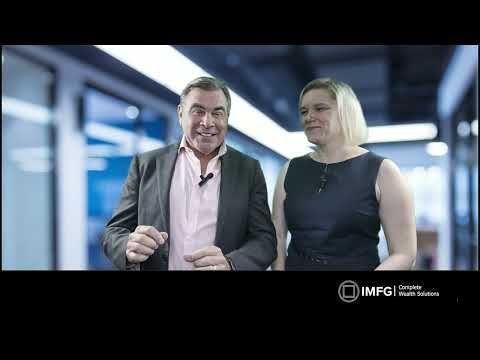5 smart superannuation strategies for this end of financial year.
Strategy 1: Add to your super and claim a tax deduction
If you contribute some of your after-tax income or savings into super, you may be eligible to claim a tax deduction. This means you’ll reduce your taxable income for this financial year – and potentially pay less tax. And at the same time, you’ll be boosting your super balance.
How it works
The contribution is generally taxed at up to 15% in the fund (or up to 30% if you earn $250,000 or more). Depending on your circumstances, this is potentially a lower rate than your marginal tax rate, which could be up to 47% (including the Medicare Levy) – which could save you up to 32%.
Once you’ve contributed to your super, you need to send a valid ‘Notice of Intent’ to your super fund and receive an acknowledgement from them before you complete your tax return, start a pension, or withdraw or rollover the money.
Keep in mind that personal deductible contributions count towards the concessional contribution cap, which is $25,000 for the 2020/21 financial year. However, you may be able to contribute more than that without penalty if you didn’t use the whole $25,000 cap in 2018/19 or 2019/20 and are eligible to make ‘catch-up’ contributions.
Concessional contributions also include all employer contributions, including Superannuation Guarantee and salary sacrifice – speak to your financial adviser to find out more.
Strategy 2: Get more from your salary or a bonus
If you’re an employee, you may be able to arrange for your employer to direct some of your pre-tax salary or a bonus into your super as a ‘salary sacrifice’ contribution. Again, you’ll potentially pay less tax on this money than if you received it as take-home pay – generally 15% for those earning under $250,000 pa, compared with up to 47% (including Medicare Levy).
How it works
Ask your employer if they offer salary sacrifice. If they do, it can be a great way to help grow your super tax effectively because the contributions are made from your pre-tax pay – before you get a chance to spend it on other things.
Remember salary sacrifice contributions count towards your concessional contribution cap, along with any superannuation guarantee contributions from your employer and personal deductible contributions. Also, you may be able to make catch up (extra) contributions if your concessional contributions were less than $25,000 in the last two financial years.
Strategy 3: Convert your savings into super savings
Another way to invest more in your super is with some of your after-tax income or savings by making a personal non-concessional contribution.
Although these contributions don’t reduce your taxable income for the year, you can still benefit from the low tax rate of up to 15% that’s paid in super on investment earnings. This tax rate may be lower than what you’d pay if you held the money in other investments outside super.
How it works
Before you consider this strategy, make sure you’ll stay under the non-concessional contribution (NCC) cap, which in 2020/21 is $100,000 – or up to $300,000 if you meet certain conditions. That’s because after-tax contributions count as non-concessional contributions – and penalties apply if you exceed the cap.
Also, to use this strategy in 2020/21, your total super balance (TSB) must have been under $1.6 million on 30 June 2020.
Importantly, the NCC cap and TSB thresholds are increasing from 1 July 2021. This may impact contribution strategies and should be considered when deciding whether to contribute in 2020/21.
Remember, once you’ve put any money into your super fund, you won’t be able to access it until you reach preservation age or meet other ‘conditions of release’. For more information, visit the ATO website at ato.gov.au.
Strategy 4: Get a super top-up from the Government
If you earn less than $54,838 in the 2020/21 financial year, and at least 10% is from your job or a business, you may want to consider making an after-tax super contribution. If you do, the Government may make a co-contribution of up to $500 into your super account.
How it works
The maximum co-contribution is available if you contribute $1,000 and earn $39,837 pa or less. You may receive a lower amount if you contribute less than $1,000 and/or earn between $39,838 and $54,837 pa. Be aware that earnings include assessable income, reportable fringe benefits and reportable employer super contributions. Other conditions also apply – your financial adviser can run you through them.
Strategy 5: Boost your spouse’s super and reduce your tax
If your spouse is not working or earns a low income, you may want to consider making an after-tax contribution into their super account. This strategy could potentially benefit you both: your spouse’s super account gets a boost, and you may qualify for a tax offset of up to $540.
How it works
You may be able to get the full offset if you contribute $3,000 and your spouse earns $37,000 or less pa (including their assessable income, reportable fringe benefits and reportable employer super contributions). A lower tax offset may be available if you contribute less than $3,000, or your spouse earns between $37,000 and $40,000 pa.
General Advice Warning
Any advice or information in this publication is of a general nature only and has not taken into account your personal objectives, financial situation and needs. Because of that, before acting on the advice, you should consider its appropriateness to you, having regard to your personal objectives, financial situation and needs.
Before making a decision to acquire a financial product, you should obtain and read the Product Disclosure Statement (PDS) relating to that product, it is important for you to consider these matters and to seek appropriate advice. Past performance is not a reliable guide to future returns. The information in this document reflects our understanding of existing legislation, proposed legislation, rulings etc as at the date of issue. In some cases, the information has been provided to us by third parties. While it is believed the information is accurate and reliable, this is not guaranteed in any way. Opinions constitute our judgement at the time of issue and are subject to change. Neither we nor our employees give any warranty of accuracy, nor accept any responsibility for errors or omissions in this document.
Identity McIntyre Pty Limited and Specialist Advice Pty Limited are Authorised Representative(s) of IMFG Pty Limited Limited ABN 18646084666, AFSL number 527657, an Australian Financial Services Licensee, Registered office at Level 8, 171 Clarence Street, Sydney NSW 2000.




